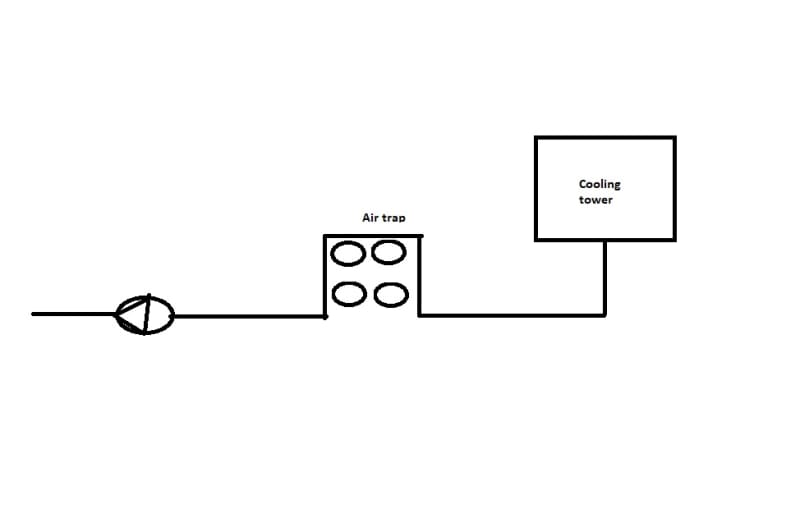Wayne _ Lunar
Mechanical
Hi all
I am the new member. I think this forum is very useful for an new engineer like me.
I have a question, please help to clarify for me.
We are conduct balancing for a chiller system. There are 3 Cooling tower but one CT, the suction pipe one of 3 CT has a one trap pipe as below:

I have a question: Does the pipe arrangement like this cause any impact to the circulation of the Condensed pump? Air will trap inside the pipe or with a high water velocity, air will move out of the air trap part?
Thank you so much!
I am the new member. I think this forum is very useful for an new engineer like me.
I have a question, please help to clarify for me.
We are conduct balancing for a chiller system. There are 3 Cooling tower but one CT, the suction pipe one of 3 CT has a one trap pipe as below:

I have a question: Does the pipe arrangement like this cause any impact to the circulation of the Condensed pump? Air will trap inside the pipe or with a high water velocity, air will move out of the air trap part?
Thank you so much!
